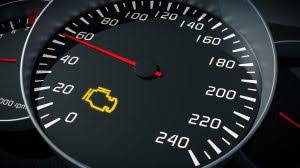If you’ve ever noticed the check engine light illuminating on your vehicle’s dashboard, you might feel a mix of concern and confusion. That warning light is your car’s way of communicating that something isn’t quite right. But the question remains: why is my check engine light on? let’s find out. Understanding the potential causes can help you address the issue promptly and avoid costly repairs down the line.
Common Reasons for the Check Engine Light
The check engine light can turn on for a variety of reasons, ranging from minor issues to more serious problems. Some of the most common causes include:
- Loose or Faulty Gas Cap: This simple issue is one of the most frequent reasons for the warning light. A loose gas cap can cause fuel vapor leaks, triggering the check engine light.
- Oxygen Sensor Malfunction: This sensor measures the amount of unburned oxygen in your exhaust and helps manage fuel efficiency. A malfunction can lead to increased emissions and reduced gas mileage.
- Mass Air Flow Sensor Issues: This sensor monitors the amount of air entering the engine. Problems can cause your engine to run inefficiently or stall.
- Catalytic Converter Problems: If your catalytic converter is failing, it can impact emissions and engine performance. Sometimes, it requires a replacement to fix the issue.
- Ignition System Problems: Faulty spark plugs, wires, or coils can cause misfires, which may activate the check engine light.
What Should You Do When the Light Turns On?
The first step is to determine whether the check engine light is steady or blinking. A steady light generally indicates a minor issue that can wait for a diagnostic check, while a blinking light suggests an urgent problem that needs immediate attention to prevent engine damage.
Regardless of the type of warning, it’s advisable to schedule an appointment with a qualified mechanic or use an OBD-II scanner to read the trouble codes stored by your vehicle’s computer system. These codes can pinpoint the exact cause of the warning light, saving you time and money.
Can I Drive with the Check Engine Light On?
In some cases, driving with the check engine light on is safe, especially if it’s steady and the car is running normally. However, if the light beams in conjunction with other symptoms like poor acceleration, strange noises, or unusual smells, it’s best to avoid driving and seek professional help immediately. Ignoring warning signs can lead to more severe engine damage and higher repair costs.
Why Is My Check Engine Light On? Let’s Find Out
If you’re wondering why is my check engine light on lets find out, remember that prompt diagnosis is key. The good news is that most issues can be identified and resolved quickly once the root cause is known. Regular vehicle maintenance and timely diagnostics can keep your car running smoothly and prevent unexpected breakdowns.
Visit Magazinetix for Expert Assistance
For more information and expert assistance regarding your vehicle’s warning lights, visit the Magazinetix homepage. Their team of professional technicians can help identify the cause of your check engine light and recommend appropriate solutions to keep your vehicle in top condition.
Remember, staying proactive about your car’s health not only enhances safety but also extends the lifespan of your vehicle. Don’t ignore that warning light—find out what it means and get your car back to optimal performance today!
